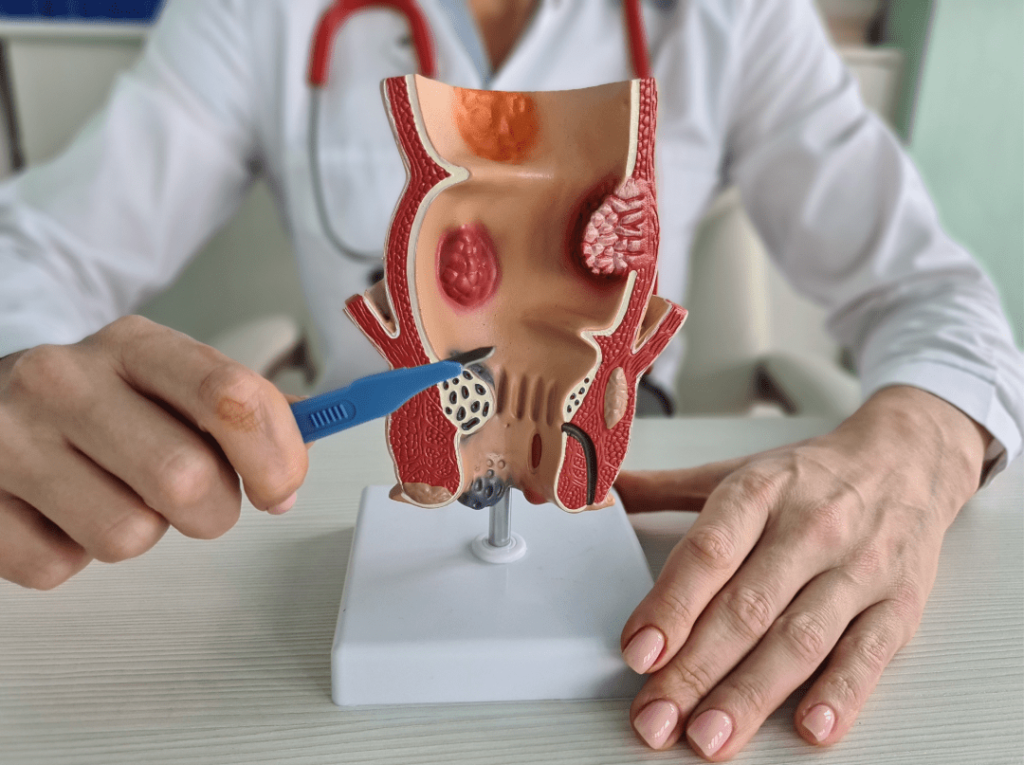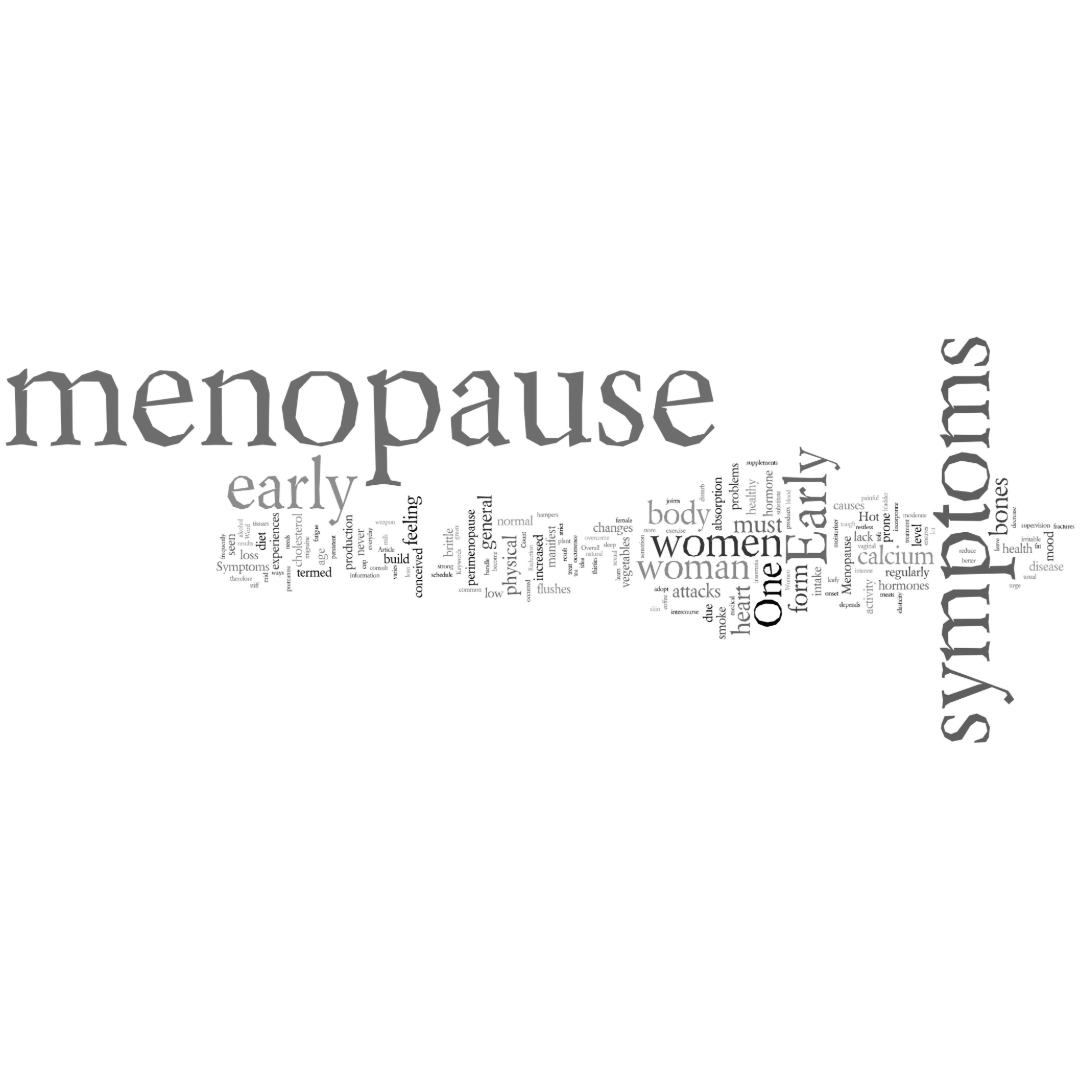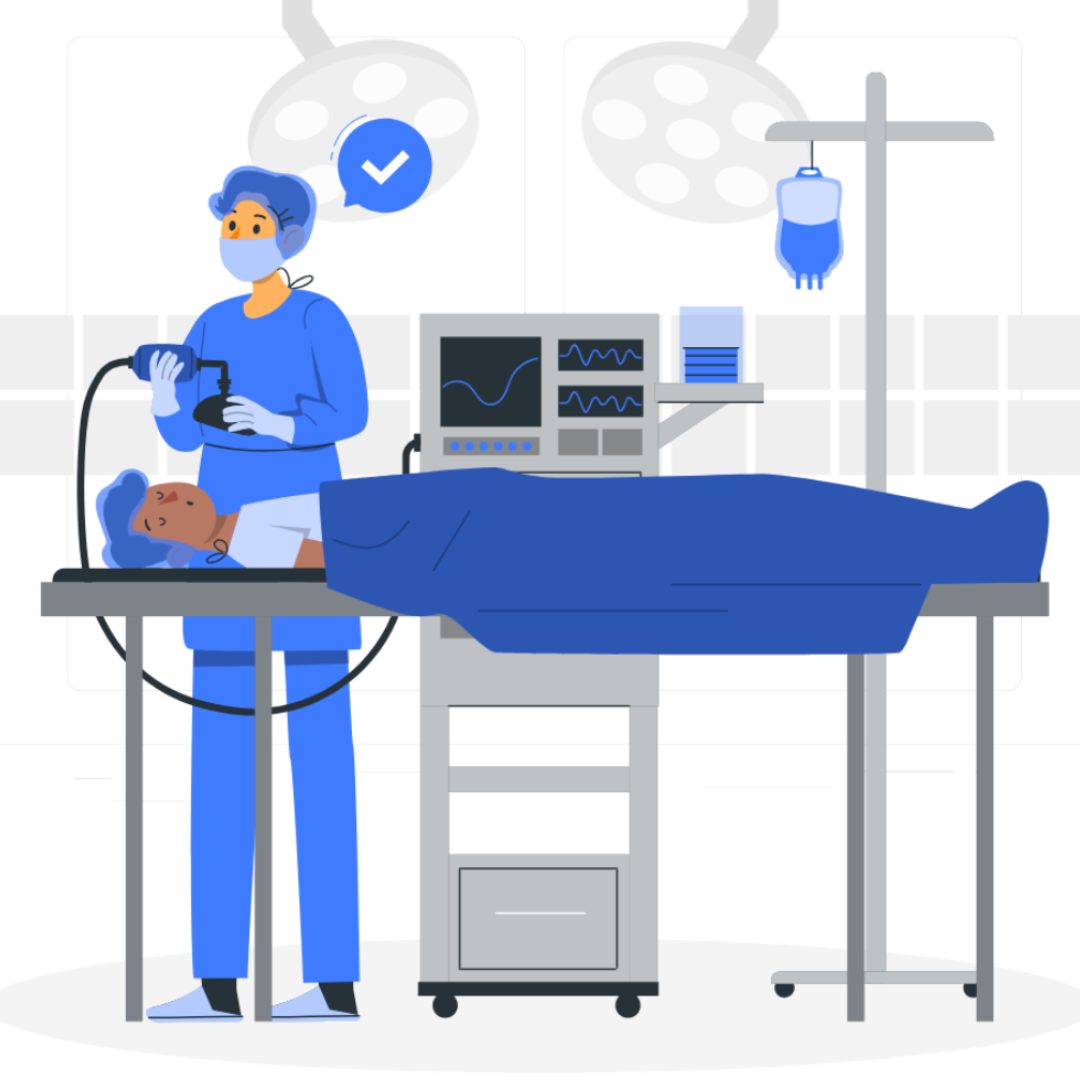Patient Information Blogs

Piles Or Haemorrhoids (Bawaseer)
Courtesy of: Dr. Kainat; Surgical Resident, Medicsi
05/05/2024
Piles Or Haemorrhoids (Bawaseer)
Courtesy of: Dr. Kainat; Surgical Resident, Medicsi
05/05/2024
Piles or Bawaseer is a broader term used by common man for perianal condition, haemorrhoids. What are Haemorrhoids? Haemorrhoids are inflamed and swollen collections of tissue in the anal area. They can have a range of sizes, and they may be internal or external. Internal piles are normally located between 2 and 4 centimetres (cm) above the opening of the anus, and they are the more common type. External piles occur on the outside edge of the anus.
Haemorrhoids are classified into four grades:
- Grade I: There are small invisible swellings, usually inside the lining of the anus.
- Grade II:These are larger than grade I piles, but also remain inside the anus. They may come out of anus during passing stool, but they will return unaided.
- Grade III: Also known as prolapsed haemorrhoids, and appear outside. The individual may feel them hanging, but they can be easily pushed back.
- Grade IV: These are the severe forms which cannot be pushed back. They are large and remain outside of the body.

An individual with piles may experience the following symptoms:
- A hard, possibly painful lump may be felt around the anus. It may contain coagulated blood. Piles that contain blood are called thrombosed external haemorrhoids. After passing a stool, a person with piles may experience the feeling that the bowels are still full.
- Bright red blood is visible after a bowel movement. The area around the anus may be itchy, red, and sore. Haemorrhoids usually present with painless bleeding. Pain may occur only in 4th degree when they become irreducible.
Causes
These may be due to:
- Long standing constipation
- Chronic diarrhoea
- Lifting heavy weights
- Pregnancy
- Straining when passing stool
- Obesity
- Colon cancer
- Spinal cord injury
Lifestyle changes
We will initially recommend some lifestyle changes to manage piles.
- Diet: A change in diet can help keep the stools regular and soft. This involves drinking more water and eating more fibre, such as fruits and vegetables, or primarily eating bran-based breakfast cereals.
- Body weight: Losing weight may help reduce the incidence and severity of piles.
- Exercising: is one of the main therapies for piles.
- Medications: Several medicinal options are available to make symptoms more manageable for an individual with piles.
- Over the counter medications: These are available, including painkillers, ointments, creams, and pads, and can help soothe redness and swelling around the anus. Do not use them for more than 7 days in a row.
- Laxatives: The doctor may prescribe laxatives if a person with piles suffers from constipation. These can help the person pass stools more easily and reduce pressure on the lower colon.
- Surgical options: Advanced Piles require surgical treatment.
-
Sclerotherapy: Medicine is injected to make the hemorrhoid shrink. The hemorrhoid eventually shrivels up. This is effective for grade II and III haemorrhoids and is an alternative to banding.
-
Banding: Involves putting an elastic band around the base of the pile, cutting off its blood supply. After a few days, the hemorrhoid falls off. This is effective for treating all haemorrhoids of less than grade IV status.
-
Open Hemorrhoidectomy: The excess tissue that is causing the bleeding is surgically removed. This can be done in various ways.
-
Haemorrhoids stapling: Blood flow is blocked to the hemorrhoid tissue. This procedure is usually less painful than hemorrhoidectomy.
-
Hemorrhoidectomy with energy device: Is newer technique involving energy devices like Liga-Sure and Harmonic to coagulate the blood supply of hemorrhoidal vessels.
-
Laser Hemorrhoidectomy: Is a newer technique involving Lasers to block the blood supply of haemorrhoidal vessels. (Currently not available in Medicsi)
-
Piles or Bawaseer is a broader term used by common man for perianal condition, haemorrhoids. What are Haemorrhoids? Haemorrhoids are inflamed and swollen collections of tissue in the anal area. They can have a range of sizes, and they may be internal or external. Internal piles are normally located between 2 and 4 centimetres (cm) above the opening of the anus, and they are the more common type. External piles occur on the outside edge of the anus.
Haemorrhoids are classified into four grades:
- Grade I: There are small invisible swellings, usually inside the lining of the anus.
- Grade II:These are larger than grade I piles, but also remain inside the anus. They may come out of anus during passing stool, but they will return unaided.
- Grade III: Also known as prolapsed haemorrhoids, and appear outside. The individual may feel them hanging, but they can be easily pushed back.
- Grade IV: These are the severe forms which cannot be pushed back. They are large and remain outside of the body.
Symptoms
An individual with piles may experience the following symptoms:
- A hard, possibly painful lump may be felt around the anus. It may contain coagulated blood. Piles that contain blood are called thrombosed external haemorrhoids. After passing a stool, a person with piles may experience the feeling that the bowels are still full.
- Bright red blood is visible after a bowel movement. The area around the anus may be itchy, red, and sore. Haemorrhoids usually present with painless bleeding. Pain may occur only in 4th degree when they become irreducible.
Causes
These may be due to:
- Long standing constipation
- Chronic diarrhoea
- Lifting heavy weights
- Pregnancy
- Straining when passing stool
- Obesity
- Colon cancer
- Spinal cord injury
Lifestyle changes
We will initially recommend some lifestyle changes to manage piles.
- Diet: A change in diet can help keep the stools regular and soft. This involves drinking more water and eating more fibre, such as fruits and vegetables, or primarily eating bran-based breakfast cereals.
- Body weight: Losing weight may help reduce the incidence and severity of piles.
- Exercising: is one of the main therapies for piles.
- Medications: Several medicinal options are available to make symptoms more manageable for an individual with piles.
- Over the counter medications: These are available, including painkillers, ointments, creams, and pads, and can help soothe redness and swelling around the anus. Do not use them for more than 7 days in a row.
- Laxatives: The doctor may prescribe laxatives if a person with piles suffers from constipation. These can help the person pass stools more easily and reduce pressure on the lower colon.
- Surgical options: Advanced Piles require surgical treatment.
-
Sclerotherapy: Medicine is injected to make the hemorrhoid shrink. The hemorrhoid eventually shrivels up. This is effective for grade II and III haemorrhoids and is an alternative to banding.
-
Banding: Involves putting an elastic band around the base of the pile, cutting off its blood supply. After a few days, the hemorrhoid falls off. This is effective for treating all haemorrhoids of less than grade IV status.
-
Open Hemorrhoidectomy: The excess tissue that is causing the bleeding is surgically removed. This can be done in various ways.
-
Haemorrhoids stapling: Blood flow is blocked to the hemorrhoid tissue. This procedure is usually less painful than hemorrhoidectomy.
-
Hemorrhoidectomy with energy device: Is newer technique involving energy devices like Liga-Sure and Harmonic to coagulate the blood supply of hemorrhoidal vessels.
-
Laser Hemorrhoidectomy: Is a newer technique involving Lasers to block the blood supply of haemorrhoidal vessels. (Currently not available in Medicsi)
-





